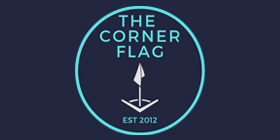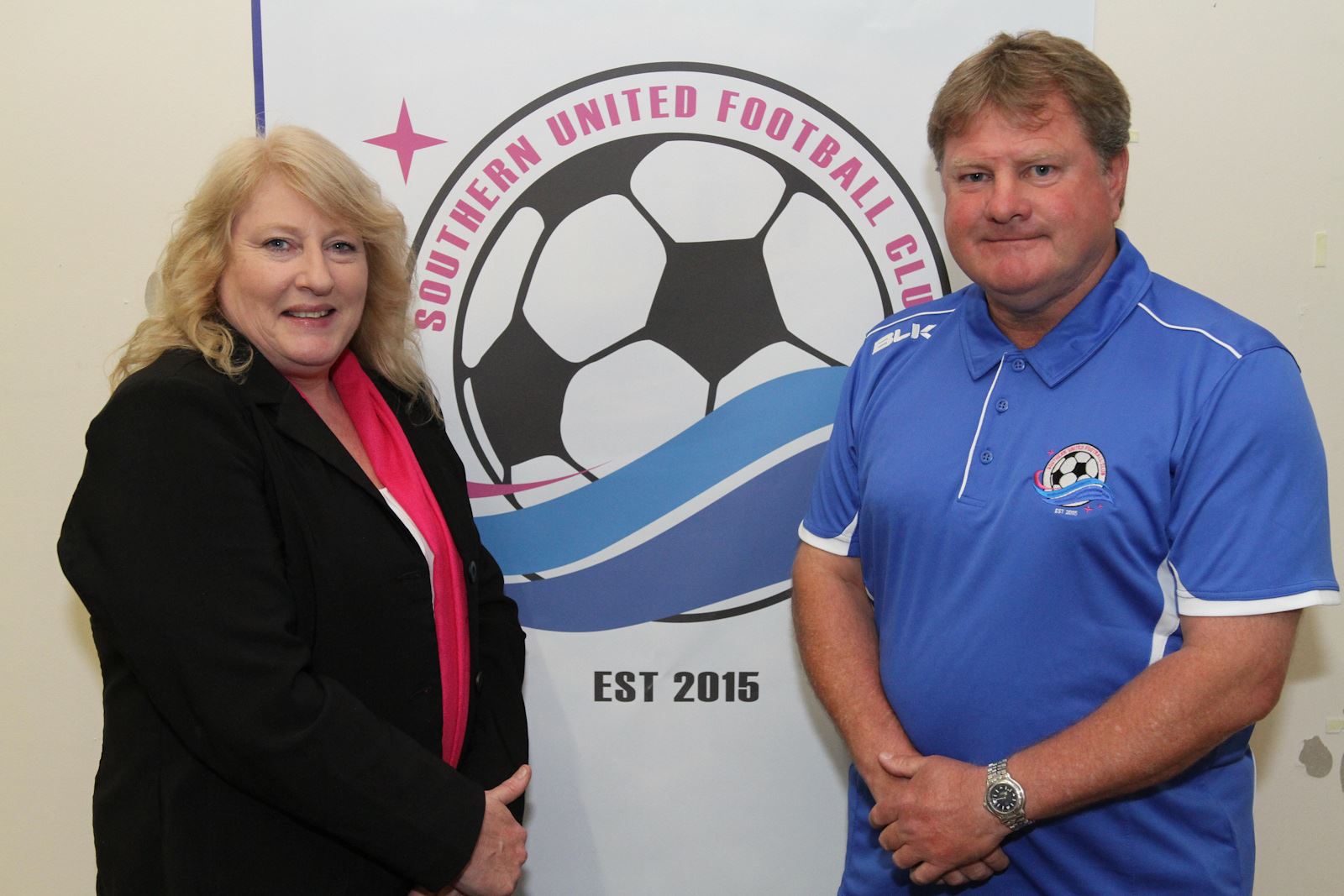It’s been an exciting few months for Southern United, who have brought together a balanced team of coaches since being handed a licence for the inaugural WNPL season.
The consortium club – consisting of WPL club Casey Comets and local outfits Mornington SC, Langwarrin SC, Seaford United and Peninsula Strikers – are now in the process of recruiting their playing stocks after pulling together an experienced mix of backroom staff for their 2016 debut.
Amongst those in the mix for next season are senior coach Stuart Munro – who brings a large catalogue of experience at the top level of football in Australia – former Sandringham SC coach Deborah Nichols, and of course newly appointed president Theresa Deas.
The former Matildas keeper spoke to The Corner Flag about the Southern United project, her return to Comets Stadium and how the club plans on helping progress the future of women’s football both locally and nationally.
READ MORE > Archive: WNPL News
***
Congratulations on the new role, it must be a thrill for you to be a part of this project and part of a club that has such a proud history, but also a bright future with the sum of its parts.
“The fact that we have five clubs that have come together to form Southern United is outstanding. That they have a vested interest in the emerging talent of young girls and women in this area is terrific, so I’m very excited to be a part of that going forward. Hopefully i can offer some experience and some guidance having been involved in the women’s game for so long.”
Obviously there are those connections with Casey Comets for yourself in the past. How pleased are you to be, in a sense, back?
“I spent more than a decade here at Casey in the peak of my career, when I was playing with the national team and after that when I had my children. It’s absolutely wonderful to see the growth of women’s football overall but predominantly the growth of women’s football in the area. The fact that we now have an opportunity to provide this elite pathway is just outstanding.
“I’m overawed to be back, even though I don’t live in the area anymore, I think it’s probably something I could do. I’ve never really taken up in my career this kind of position, it’s always been in different areas of either development or promotion, assisting with the game. This is probably a forwards step to do something that really excites me and to see something through from the start with a group of people who are extremely confident in taking [Southern United] forward.”
Can you tell us a little bit about the board and coaching structure you’ll take into the 2016 WNPL season?
“At the moment on our board, we have Michael Woodward (secretary) from Peninsula Strikers, then there’s myself as president. The other committee members are made up of one from each of the current clubs which forms the initial board. Obviously as we get more members involved, we’ll have to have a formal board meeting that will put our formal board in place, but in the meantime, we’re comprised of a committee of five that are all working hard behind the scenes and drawing on the expertise from others within the consortium clubs.
Stuart Munro from an outside is a massive coup for the club, despite the fact he’s not been known specifically for coaching women in the past. Can you tell us a little bit about why you selected Stuart amongst the host of candidates you had?
“Stuart’s list of credentials is longer than your arm, but he is not one of the recognised coaches for coaching women’s football. However we felt that his expertise, the fact that it was the right fit for him at this time and that we have the junior structure of coaching well and truly established who have a serious knowledge of the women’s game, the coaching staff will work as a team to ensure they information share about the women’s game.
“We’re hoping that it’ll be a wonderful thing for us going forward as them working all together not only allows them to know what happens with each individual girl, but it also gives them the opportunity to develop themselves as coaches going forward. In that respect, our aim is that we develop not just players, but also coaches, female coaches and also our administration staff.”
Do you believe that women’s coaches are underrepresented in Victorian football? What will Southern United do to help progress this?
“They are, the statistics show that they are. There are probably areas where you find that the statistics are higher because they’ve been given opportunities. I think the major problem for women in football and particularly coaches in football, we’re seeing more opportunity for girls playing, but coaches in football still don’t have those opportunities. We’ve made it so each of the assistant coaching roles will be filled with females.
“What we intend to do is help utilise more of the senior players if they can to be able to develop them as coaches, should they choose to go down that pathway. If not, we’ll be looking to develop women’s coaches from outside of Southern United and encouraging them to work with the senior coaches.”
How do you see the WNPL progressing the future of women’s football in the state, and as a result raise the standard of football nationally?
“When you try to start to raise the standard of something, you have to also raise the focus of something. The WPL was great for its time but it’s time for something else to happen and I think the WNPL now is going to make all the clubs lift and raise the bar. If that happens and we lift the bar, then we’re established as a club. [We’ve then got to] do the right thing for the community clubs surrounding us by allowing them to be a part of our WNPL club. If we’re getting out there to assist them, then the standard of player, coaching and administration is only going to get better. If we can knowledge share as we go along and everyone feels a part of it, then realistically [progression of football in Victoria] could happen and I can see the start of that happening here.
“As far as raising the standard of football in Australia, the W-League has grown in the time its been there. We now have two Victorian teams which has given another 20-30 girls an opportunity to play at the highest level. Given that there are only eight WNPL clubs, and that in the past we’ve had 12 WPL clubs, because the standard is being raised, it means that the best of those girls playing in the WPL will be looking at the new league. What’s underneath that in the community clubs means that the standards are going to be raised in State League 1 – and I can see that being a high-standard competition. That means it’ll help that league grow, even if at the start you have five teams much stronger than the others, as they play against each other, [the other clubs] will realise what they have to do to get to that level.
“Nationally, change is probably a good thing, even though people may not like it. In Victoria, it raises other opportunities with it being a national league [like the NPL structure for mens]. I can see the FFA hopefully, if they’re keen to push the women’s game, maybe having a Cup like the men do. That’s been wonderful for [grassroots] exposure across the board. I see that the FFA in the future may want to do these sort of things, but we’ll just have to wait and see.
What do you think the biggest hurdles are to a national competition like that?
“I don’t know what the secret is to be honest, money helps. Women’s sport has always been in this position. The profile of women’s football doesn’t always lift when it gets great press. The national team hasn’t really had too much positive press recently because of this wage dispute. I’d rather be hearing about them winning Asian Cups, winning games than anything else, because that’s what young girls look up to. I think going forward, money is the biggest issue and to get money and attract sponsors, we need to have a really good profile. I think that needs to come from the FFA, and them realising there’s a market out there for women in sport.
“It’s no longer about the old man sitting in front of the TV pressing buttons, I do that on a Saturday afternoon if I can’t get to a W-League game. I watch all sorts of sport, both men’s and women’s. The market is changing and I think unfortunately that the big news media outlets haven’t realised. [For example] the women’s AFL game between Melbourne and Western Bulldogs, and the exposure that got. That was one game and it was amazing because the AFL had tied it in so well with those big media outlets.
“In saying that, social media and the smaller outlets have been wonderful in brining exposure women’s football. The more people that are engaged, hopefully the more the media will realise that the market is changing.”

